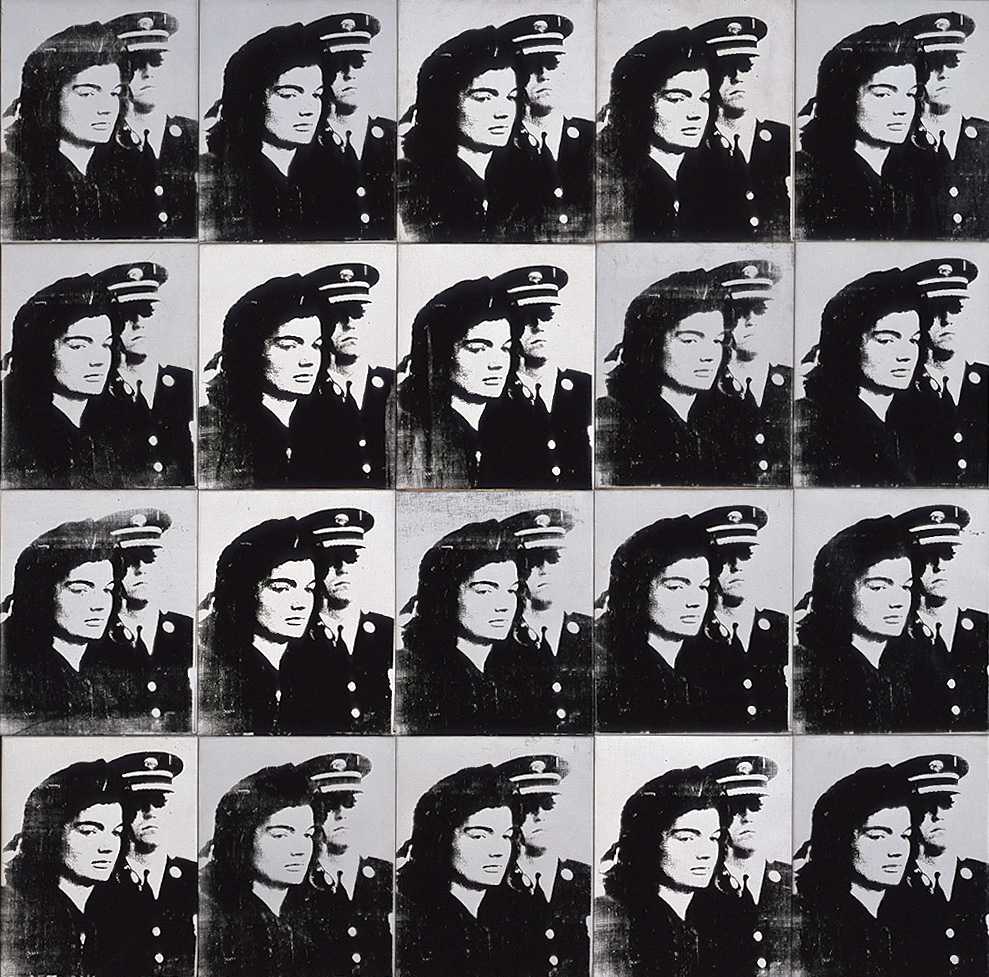
Twenty Jackies
© The Andy Warhol Foundation for the Visual Arts/Artists Rights Society (ARS), New York
“Everybody has their own America, and then they have the pieces of a fantasy America that they think is out there but they can’t see.” – Andy Warhol
Andy Warhol was born Andrew Warhola in Pittsburgh, Pennsylvania. His parents had immigrated to the United States and settled in an Eastern European enclave in the city. Warhol’s mother was an artist as well, and after he moved to New York in 1949, she would follow him. They lived together until her death.
Throughout the 1950s, Warhol worked as a commercial illustrator. By the early 1960s, he began to develop his iconic Pop style. As a leading figure of Pop art, Warhol brought the imagery and techniques of mass commercialism into the visual arts, moving away from abstract expressionism, the dominant movement that touted universal appeal and a unique brand of American freedom. Warhol’s work showed another side of America. His paintings of Coca-Cola bottles and Campbell’s soup cans highlighted the wide-spread recognition of these products through slick advertising. Early works were painted by hand, the images often traced from projection in order to appear as if mechanically produced. In 1962 Warhol began to create silkscreen prints, the medium he is best known for.
While the artist’s hand is not visible as brushstrokes in his photo-silkscreened works, Warhol’s choices—of content, cropping, color, and, in some instances, manipulation of the photographic source image—are integral to his process. Through these choices Warhol drew on themes of celebrity, death, disaster, and commodity, often read as metaphor for American culture. In his celebrity portraits and self-portraits, some see religious icons as inspiration; Warhol was Catholic, and he remained religious throughout his life.
Warhol was skillfully ambiguous, and his work is interpreted as both celebratory and critical. From his artwork, ranging from painting and sculpture to film, to his studio (The Factory), which became a flashpoint for 1960s counterculture, to his infamous celebrity persona, Warhol was deeply influential during his lifetime, and his influence on younger generations of artists is difficult to overstate.